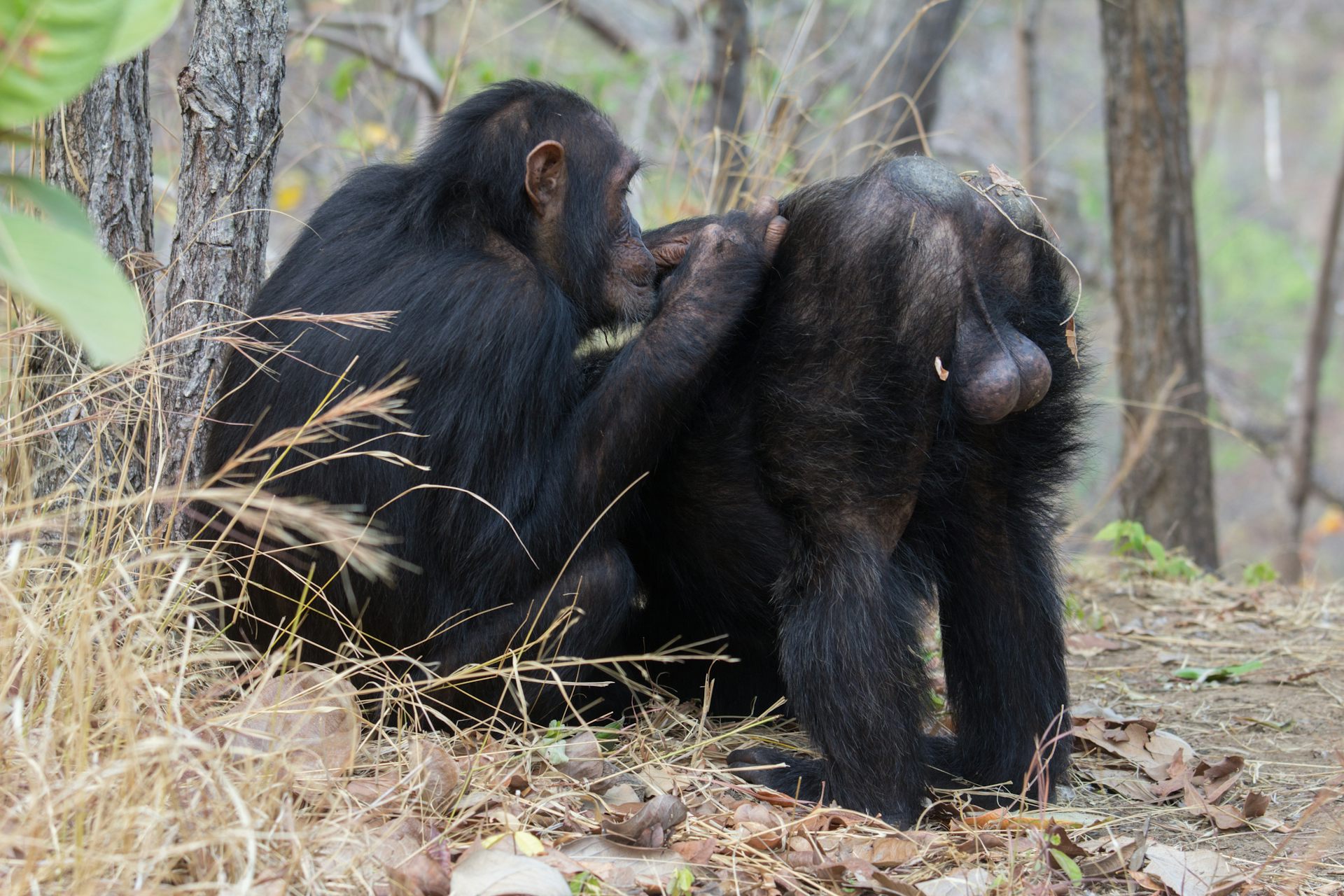

He says the two sequences in DNA highlighted in the paper were lost sometime between when humans and chimps split from each other 6 million years ago and before humans and Neanderthals diverged about 600,000 years ago
Chimpanzee penis skin#
Kingsley says they are continuing to work through the lost sequences to identify links with other anatomical differences such as sweat glands, walking upright, s-shaped spines and skin changes. Kingsley says the loss of the gene that kept brain cell growth in check may have contributed to the growth of bigger brains.īut he says the loss of DNA structure would be only one of the factors in evolving new traits.

"But less can also be more if you lose a switch that is the molecular difference to the expanded production of a trait." "I think one of the cool things about the paper is when you look at molecular loss, less can be less and you can lose an anatomical structure," says Kingsley. They found in mice, the first gene was associated with genitalia and sensory whiskers while the latter restricted brain growth. The team then used experiments with mice to find where two DNA sequences were expressed that were associated with the human androgen receptor gene and a gene called GADD45g that suppresses cell growth.

Penile spines and brain growthĪ number of deletions also appeared near genes involved in neural development, their analysis revealed. "We saw more changes than you would expect near genes involved in steroid hormone signalling," Kingsley says. The researchers then used a computer analysis to identify deletions that were clustered around particular genes. "That tends to be the sort of alteration that's favoured when a new trait is evolving." "If you alter the way turns on or off at a particular place in development, that can have a very large effect on a particular structure, but still preserve the other functions of the gene," Kingsley says. The researchers identified 510 DNA segments that were missing in humans, but "highly conserved" in the chimp and macaque.Īll but one of these was found in the non-coding regions of the genome - between genes - which help control and co-ordinate gene activity. The findings are based on a comparison between the genomes of modern humans and our nearest relative, the chimpanzee, and the macaque. is part of a whole suite of changes related to longer-term bonding and not brief encounters." Chimps have it, humans don't "In humans ovulation is hidden in females and the female in our species is sexually receptive for an extended period of time. "Females advertise when they are fertile and females are only sexually receptive around ovulation. "Organisms that have penile spines generally have a competitive mating system," says Kingsley. It is believed in chimpanzees and other mammals penile spines are used, among other things, to sweep away competing sperm. Women of the world will be particularly grateful that among the ditched DNA is the penile spine enhancer, which gives chimpanzees spiky-spined penises.Ĭo-author Professor David Kingsley, of the Howard Hughes Medical Institute at Stanford University, says the loss of the "intimidating" penile spines could be a factor in humans developing monogamous relationships. In a paper published this morning in Nature, the Stanford University researchers show the differences between humans and our nearest relative, the chimpanzee, are the result of DNA sequences lost since our divergence from a common ancestor about 6 million years ago. Sexual evolution Big brains and a softer penis are the result of the things we have lost on the evolutionary road, US researchers reveal. Penis evolved millions of years ago, Science Online,.Forget foreplay, size does matter: study, Science Online,.Researchers restore rabbit's manhood, Science Online,.


 0 kommentar(er)
0 kommentar(er)
